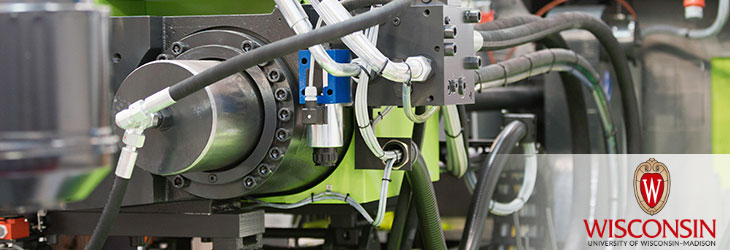Engineering

3D Printer System with Passive Fiber Aligning Nozzle
WiSys: T240005US02
Inventors: Gokul Gopalakrishnan, John Obielodan
WiSys is currently seeking a strategic partner in the additive manufacturing industry that is interested in co-development opportunities and would ultimately provide a route to market for commercialization of this 3D printing technology.
Overview
In recent years, 3D printing has evolved from a technique that was used entirely for prototyping to one that also provides a valuable manufacturing pathway. In particular, 3D printing of fiber-reinforced composites has garnered attention as an approach to manufacturing high-performance, lightweight components for several applications including the aerospace and defense industries. The improved characteristics of these composite structures depends significantly on the orientation and alignment of the fibers during the print. For example, properties such as strength, stiffness, electrical conductivity and thermal conductivity are enhanced along the direction parallel to the fiber orientation. The ability to provide even a relatively small degree of fiber alignment has been shown to provide significant gains over the properties of a randomly-oriented fiber-reinforced composite.
Existing methods for controlling fiber direction during 3D printing either involve expensive equipment and modifications, often requiring active print control through rotational or reciprocating motion, or else rely on shear flow of the fiber impregnated filament, making the fiber orientation inevitably coupled to the material deposition direction which is problematic in applications where a fiber orientation independent of the deposition direction is desired.
The Invention
Researchers from the University of Wisconsin-Platteville have developed a 3D printer nozzle that passively aligns fibers toward a particular orientation during deposition or writing, eliminating the need for highly specialized 3D printer components to orient fibers in a non-deposition direction. This device delivers a molten resin and fibers through a tapered nozzle body rather than the circular nozzles typically used in Fused Filament Fabrication (FFF) printing. This allows fibers to be passively oriented in the preferential direction during printing regardless of nozzle flow direction.
Applications
- Aerospace manufacturing
- Defense manufacturing
- Auto manufacturing
Key Benefits
- Independent control over the orientation of fibers in 3d-printed composites starting from short-fiber impregnated filament
- Operates at a normal FFF operating speed
- Operates without implementing any external orientation-influencing devices
- Estimated to improve strength by about 30-50% depending on the fiber loading and length distribution
Stage of Development
Research is currently underway to test and optimize this technology.
Tech Fields
For current licensing status, please contact Allee Marti at [javascript protected email address] or 608-316-4037